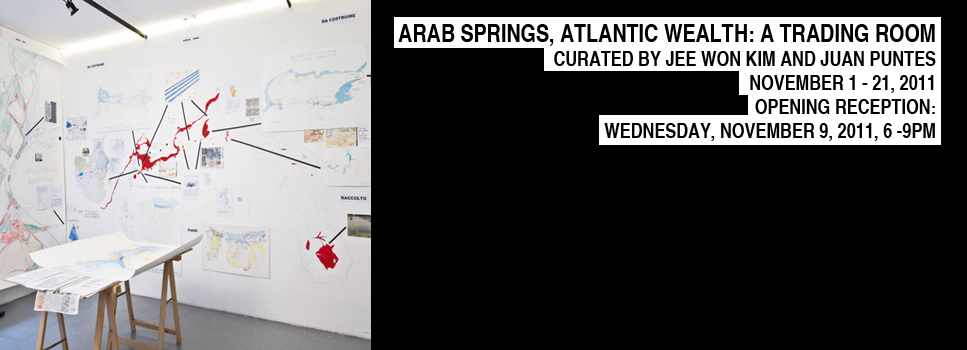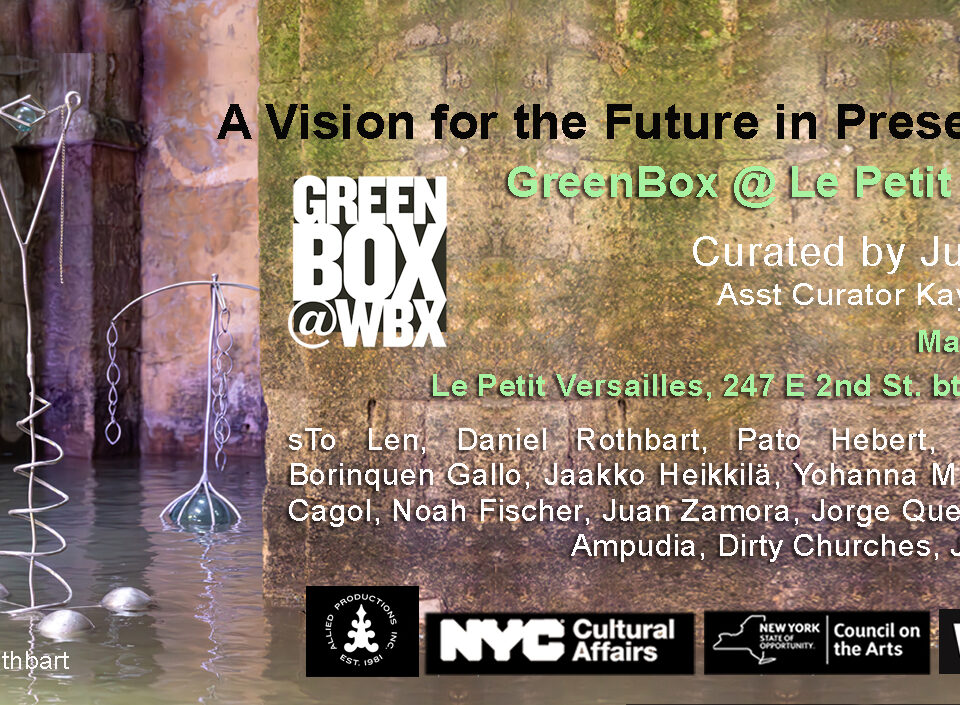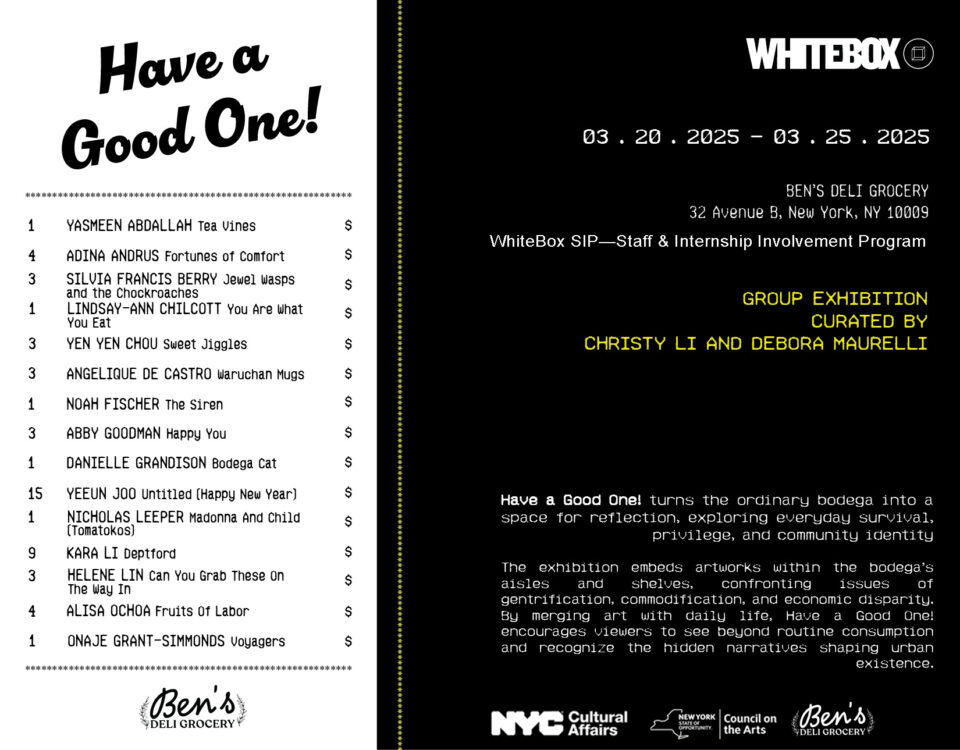Oan Kim: ONE SECOND DIARY / FILM NOIR MACHINE
October 22, 2011LUMINAE
December 17, 2011Curated by Jee Won Kim and Juan Puntes
November 1 – 21, 2011
Opening Reception: Wednesday, November 9, 2011, 6 – 9pm

In phase with Performa ’11, ARAB SPRINGS / ATLANTIC WEALTH will be a news-time performance enacted by various players in “Ocean Earth Development Corp*, a corporation founded by artist Peter Fend. Using lessons learned from the groundbreaking satellite work of Ocean Earth for mass-media, participants of the firm will show how major engineering projects can be built in North Africa and the Persian/Arabian Gulf to create jobs—to produce energy, and to restore ecology. Combining both the satellite lessons and in-ocean tests in New Zealand, Ocean Earth presents a post-petroleum scenario with giant algae at the two ends of the Arab world—Morocco, on the Atlantic Ocean, and Oman, on the Indian Ocean. This will be done on giant line-drawings of the regions, which will be added to continuously in response to the news.
For the local area, a long-researched restoration project will be proposed on the opposite wall, positioned at a key site on the bird flyways from South America to the Arctic: Jamaica Bay. The theme image comes from the Ocean Earth response to the loss of its office in the World Trade Center: a parallel between the borders of NY/NJ/PA/CT with those of Iraq/Kuwait/Saudi Arabia/Iran.
In the middle of the space will be Oppenheim’s 1967 piece, Dead Furrow. Such a structure was built at the Iran-Iraq border in the 1980s and will be shown in the video documentation projected in the rear space. In response to the Iraqi dismissal of US forces, a fresh post-war construction scenario for Iraq is proposed (Bomb Magazine published this first in 1981, and follows through—with much more content—in December 2011).
30 years ago, artist Peter Fend founded Ocean Earth, a corporation comprised of architects and artists whose aim was to fulfill ecological imperatives by means of art, architecture and technology. Building upon the ideas of artists such as Robert Smithson, Dennis Oppenheim and Gordon Matta-Clark, Ocean Earth contracted with world-rank engineers, naval architects and scientists in a dozen countries overseas to realize art-sourced concepts as entirely-new architecture. This means, ecological engineering.




